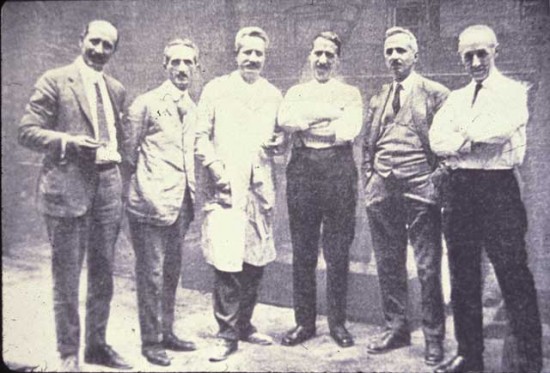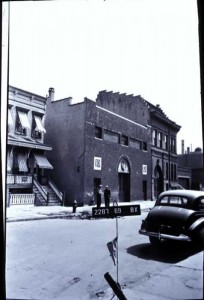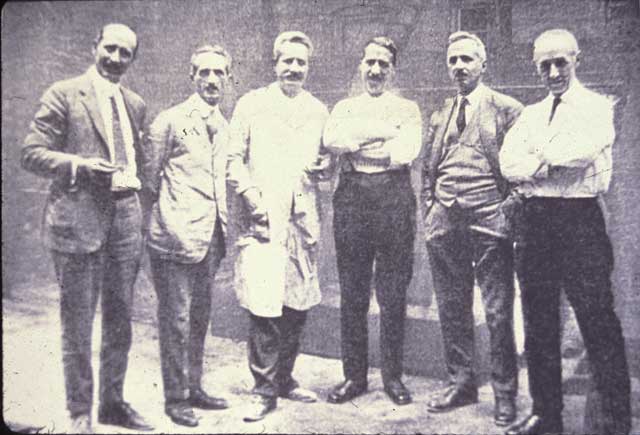
142nd St. studio was birthplace of the Lincoln Memorial
If the street sign that reads “Piccirilli Place” at the corner of 142nd St. and Willis Avenue lacks meaning for Mott Haven residents, it’s because the family it honors is one of the neighborhood’s best-kept secrets.
Almost a century ago, the block was the site where six brothers from the Piccirilli family carved the iconic sculpture of Abraham Lincoln that is now housed at the Lincoln Memorial in Washington D.C.
The Piccirillis were all master carvers, who lived and worked in Mott Haven for five decades. During their prolific careers, they carved many famous, large-scale, marble sculptures, including their most famous bust, honoring the 16th President.
Recently, Lincoln has been a popular topic of conversation, stemming from the Oscar buzz surrounding Steven Spielberg’s film. However, the legacy of the brothers who sculpted him is in danger of becoming a footnote in the Bronx historical archives. Their studio closed in 1945 and was razed in the 1970’s, leaving no trace of the Piccirillis’ work, or their history.
Bill Carroll, a retired math teacher who grew up a few blocks from the studio, wants to make sure the once famous sculpting clan is not forgotten.
“The Piccirillis were some of the greatest artisans of their day,” Carroll said.
“When the people of Mott Haven see the Lions at the Public Library or the Fireman’s Memorial at Riverside Drive, I want them to feel pride knowing those works were carved in their neighborhood,” he continued, referring to the Manhattan landmarks.
Carroll makes frequent presentations about the brothers, and has created a webpage about them on the Lehman College website.

The Piccirillis originally opened their studio in 1893. They regularly received famous visitors like Teddy Roosevelt and William Howard Taft. Fiorello LaGuardia was a close friend of Attilio Piccirilli.
But despite their talent, they insisted their names never appear on their sculptures.
One of the last living connections to the Piccirillis is Jerry Capa. In 1940, Capa was a 14-year-old art student at Manhattan’s Leonardo Da Vinci Art School, founded by Attilio Piccirilli. Attilio invited Capa to lunch one Saturday. For the next five years, Capa, now 85, came to the studio every Saturday. He documented his time at the studio in a short memoir that appears on the Lehman College webpage.
“To me, it was like stepping from the Bronx into the Renaissance,” said Capa, who lives in Queens. “As impressive as their work was, they were extremely polite and always treated me like I knew something.”
The Piccirillis specialized in the “pointing method” of carving marble, which they learned while growing up in the Massa Carrara region of Italy. Sculptors would bring plaster casts to the studio, where they would reproduce them with a specialized marble-carving tool.
Renowned sculptor Daniel Chester French was a frequent collaborator. In 1914, French was commissioned to sculpt the Lincoln statue. After five years of work he took it to the Picirillis’ studio to carve it. He finished the 19-foot-high piece at the Mott Haven site in 1920.
Although the Piccirillis were frequently flooded with project requests early in their careers, projects slowed to a trickle by the 1940’s.
“When I met the brothers, the neo-classical style they were involved in was practically dead,” Capa said. “As the requests for work dropped off, most of the brothers just stopped showing up.”
Carroll thinks a film depicting the life and work of the sculpting brothers is overdue. Several years ago, he teamed up with public TV station WLIW to make a documentary, but funding was cut before the project was finished, leaving Carroll with hundreds of hours of raw tape.
He has since looked to resume the project with Robert Dimaio, a filmmaker who specializes in profiling artists. Dimaio says the cost to digitize the tapes is prohibitive.
“If South Bronx residents could see the footage and realize that these brilliant, humble artists could have been their neighbors, they would donate to this project,” he said.
Lloyd Ultan, a Bronx historian, said local residents were unaware of the historical significance of the studio when they allowed the building it was housed in to be demolished.
“They had no idea this building was once home to the Bronx’s greatest chiselers,” said Ultan, adding that many residents were newcomers to Mott Haven.
For Dimaio, the film project goes beyond honoring a family legacy.
“This story is about more than just the Piccirilli brothers,” he said. “It’s a testament to people who have made it their mission in life to do the very best work they can and not care about who gets the credit.”
There will be a talk on “The Legacy of the Piccirilli Brothers in the Bronx” given by Bill and Mary Carroll on Saturday, April 20, at 11 a.m. Find out more on the Bronx Historical Society’s website, at http://www.bronxhistoricalsociety.org/Events.html, or call 718-881-8900.

